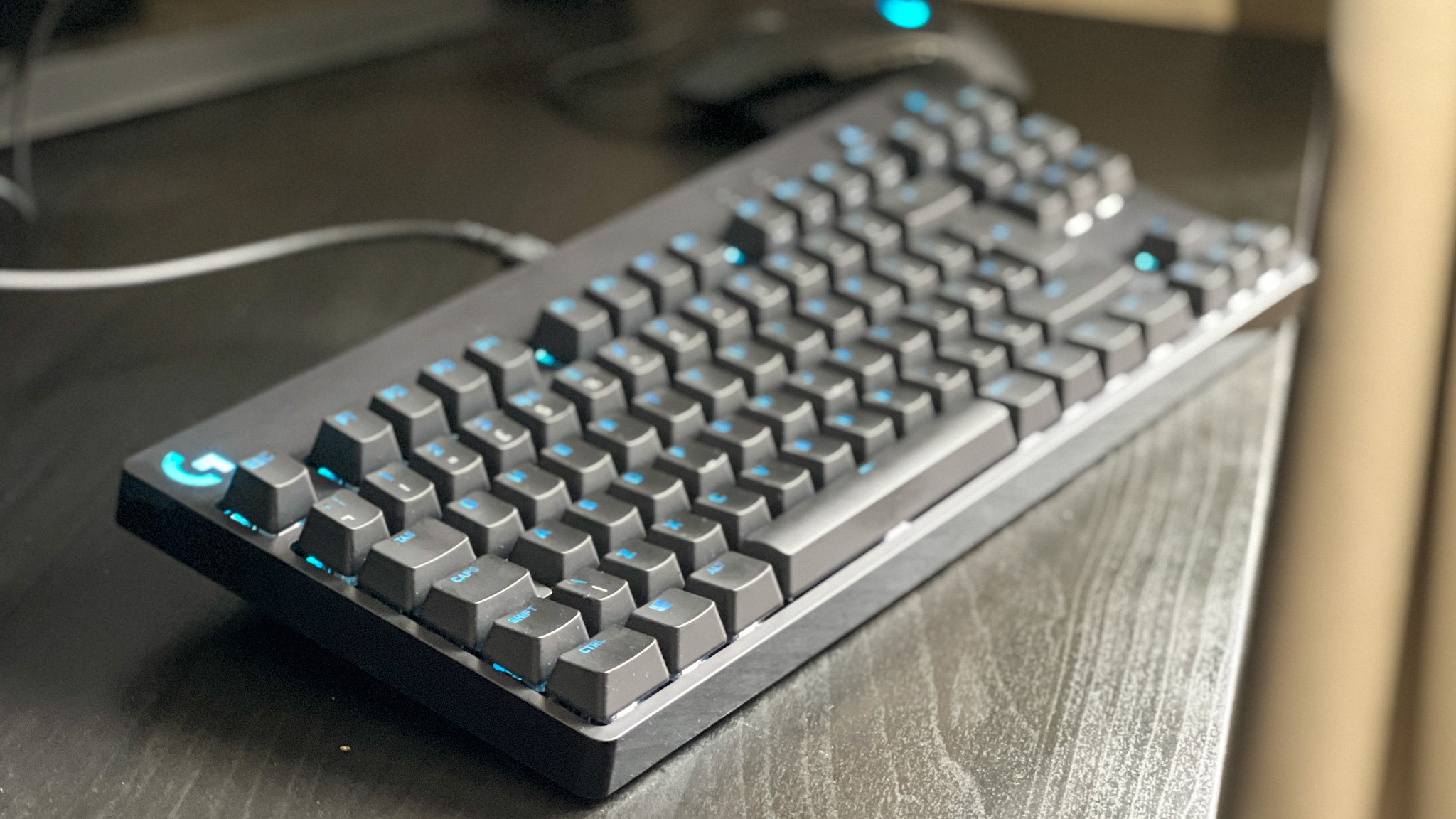GamesRadar+ Verdict
The Logitech G Pro gaming keyboard still manages to hold its own in the competitive tournament space. It's an excellent TKL deck with snappy blue clicky switches and a high build quality. However, releases from that last few years have overtaken this price tag with the extra features they can offer.
Pros
- +
Powerful RGB
- +
Durable build quality
- +
Satisfying typing experience
Cons
- -
Some minor switch echo
- -
ABS keycaps
- -
Limited extra functionality
Why you can trust GamesRadar+
Still very much a part of Logitech's current lineup, the Logitech G Pro TKL gaming keyboard first hit the shelves back in 2019 and exploded in popularity thanks to its smaller size and eSports-focused design. We've got plenty of new contenders on this scene now, though, so where does this classic sit in today's landscape of the best gaming keyboards?
It might be a little older, but the G Pro still retails for $129.99 / £109.99 (though sales do help in this regard). That puts it in line with options like Corsair's K70 TKL line from just the last couple of years. However, the G Pro holds up surprisingly well when pitted against these young boards - thanks to its comfortable typing experience, low latencies, and tournament-oriented ethos. There are very few bells and whistles here, but the core experience still manages to shine through nonetheless.
Logitech G Pro TKL design
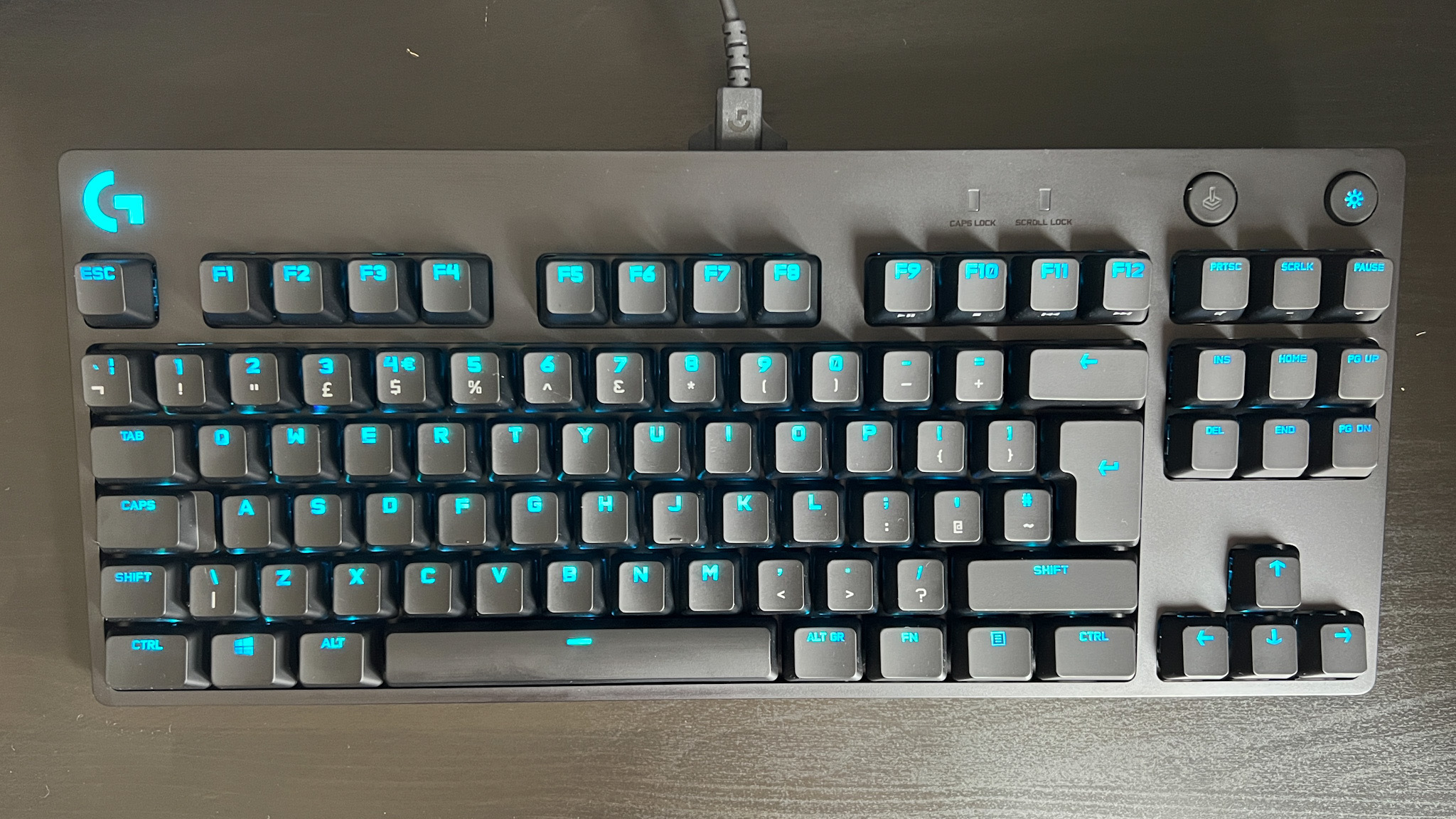
I'm a particularly big fan of this stocky, but still well-balanced Logitech design. This is a slightly thicker keyboard than I'm used to, sitting taller from the desk. That means the lack of a wrist rest does make itself known pretty quickly, though I never felt uncomfortable when typing or gaming for longer periods. That stocky aesthetic continues throughout the plastic chassis, with a simple black slate sitting around black ABS keycaps and a bright shining Logitech G logo in the top left corner.
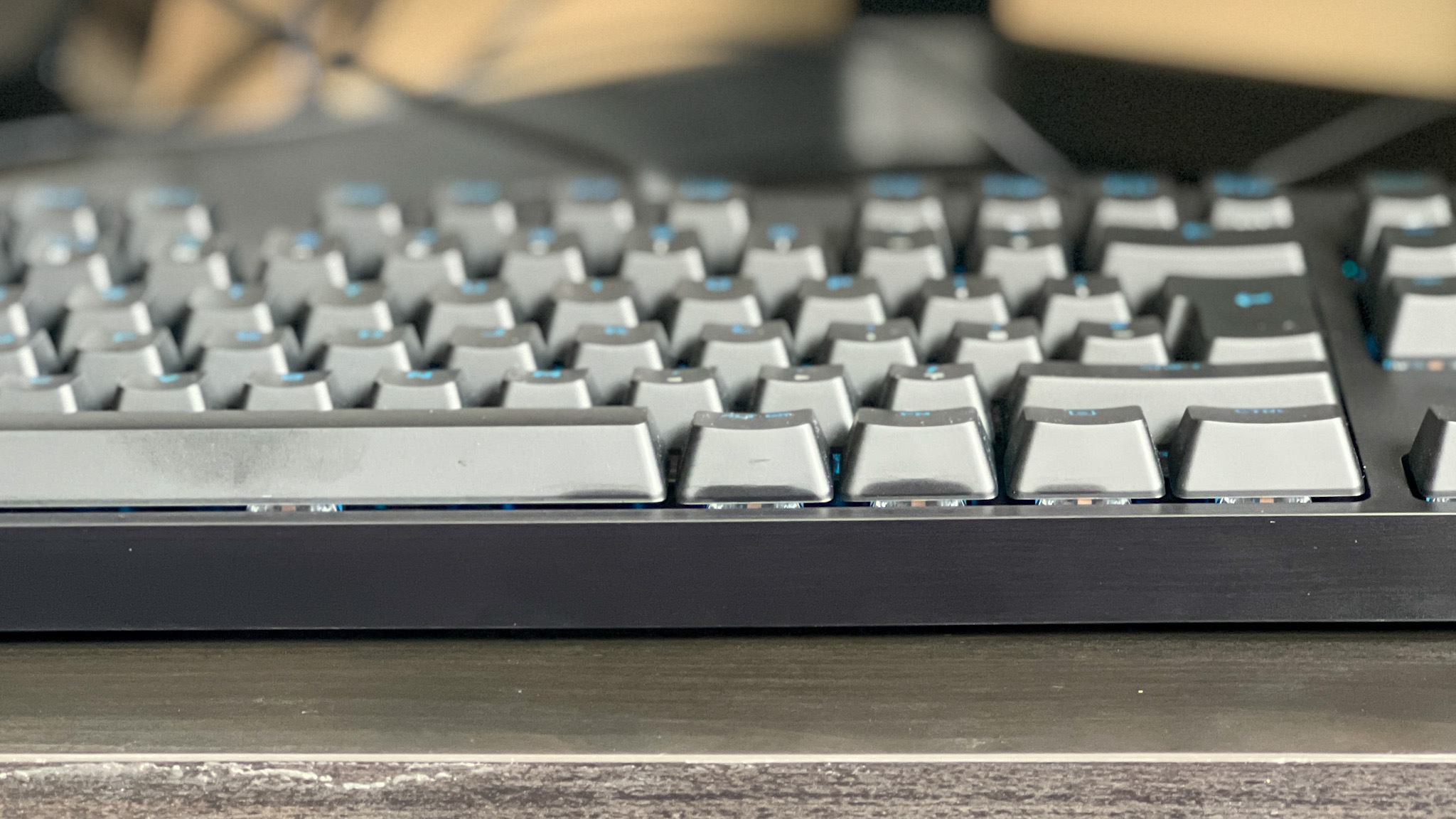
The legends are, unfortunately, only lit when your backlighting is on - but you're going to want to keep this RGB fired up. With almost no light bleed around the keycaps themselves and notably strong LEDs underneath this is some of the cleanest RGB I've seen in a gaming keyboard. Even using the Logitech G Pro on the brightest of summer days, I was still able to enjoy my light show.
The cable is detachable - and proprietary - offering a mini USB connection with two support grips on either side. However, I was easily able to fit my own cable into this slot - so you're covered if your original lead goes missing.
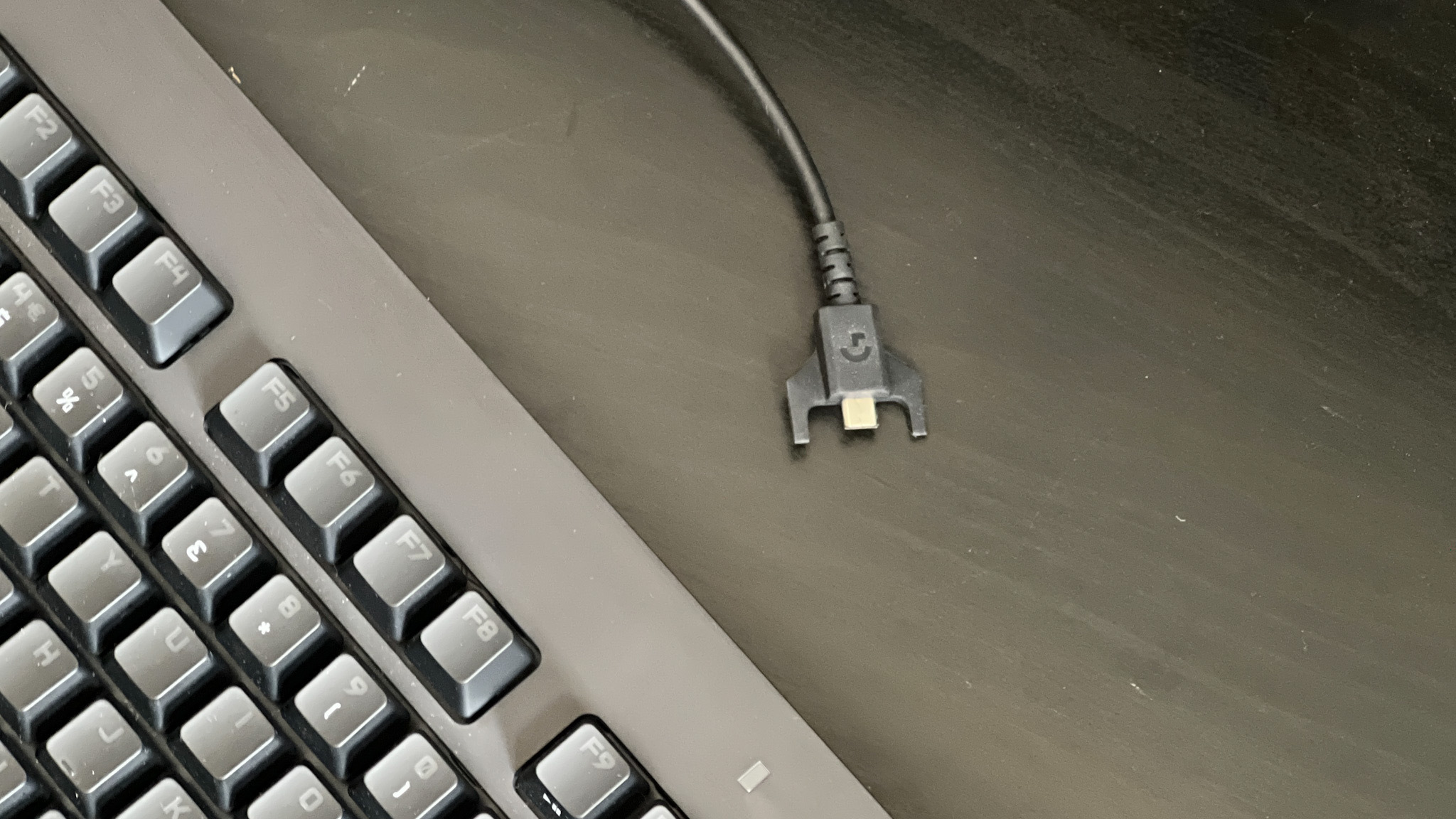
An all-plastic chassis at well over $100 may feel like a tough pill to swallow - especially when competitors are adding brushed aluminum to far cheaper decks these days. However, I was surprised by the build quality here. Everything feels solid and there's no flexing this main plate no matter how hard you try. Even the cheaper ABS keycaps don't feel too offensive coming from a luxury PBT set. Yes, they're slightly slippery which might be a deal breaker if you're looking for a particularly tactile experience, but I still managed to stay in control through more intense moments of gameplay.
Logitech G Pro TKL features
Average price: $129.99 / £109.99
Type: Mechanical
Size: TKL
Switches: Logitech blue tactile (Kailh)
Keycaps: ABS
Media keys: Dual-function
Wrist rest: None
USB passthrough: None
The Logitech G Pro has been designed with its tournament players in mind, which means the keyboard itself doesn't have too many extra features to boast about. That's perhaps my biggest concern in making a recommendation in 2022. There are plenty of eSports-focused gaming keyboards which do add features like a fully programmable deck (the aforementioned Corsair K70 RGB TKL), dedicated volume dials and controls (the Roccat Vulcan TKL Pro), or luxury doubleshot PBT keycaps (the Razer Huntsman Tournament Edition). Considering all these decks are within $20 - $40 of the Logitech's admittedly cheaper price point, the value proposition here doesn't quite hold up to 2022's standards.
However, there is still plenty to tinker with here if you're looking for a stripped-back experience. The proprietary Logitech clicky blue switches come with a responsive feel and snappy pre-travel distance perfect for both typing and hitting more twitch-reflex combos. Plus, you're getting Cherry stabilizers here, making everything feel solid and keeping wobble to an absolute minimum (I only ever noticed notable movement on the enter key).
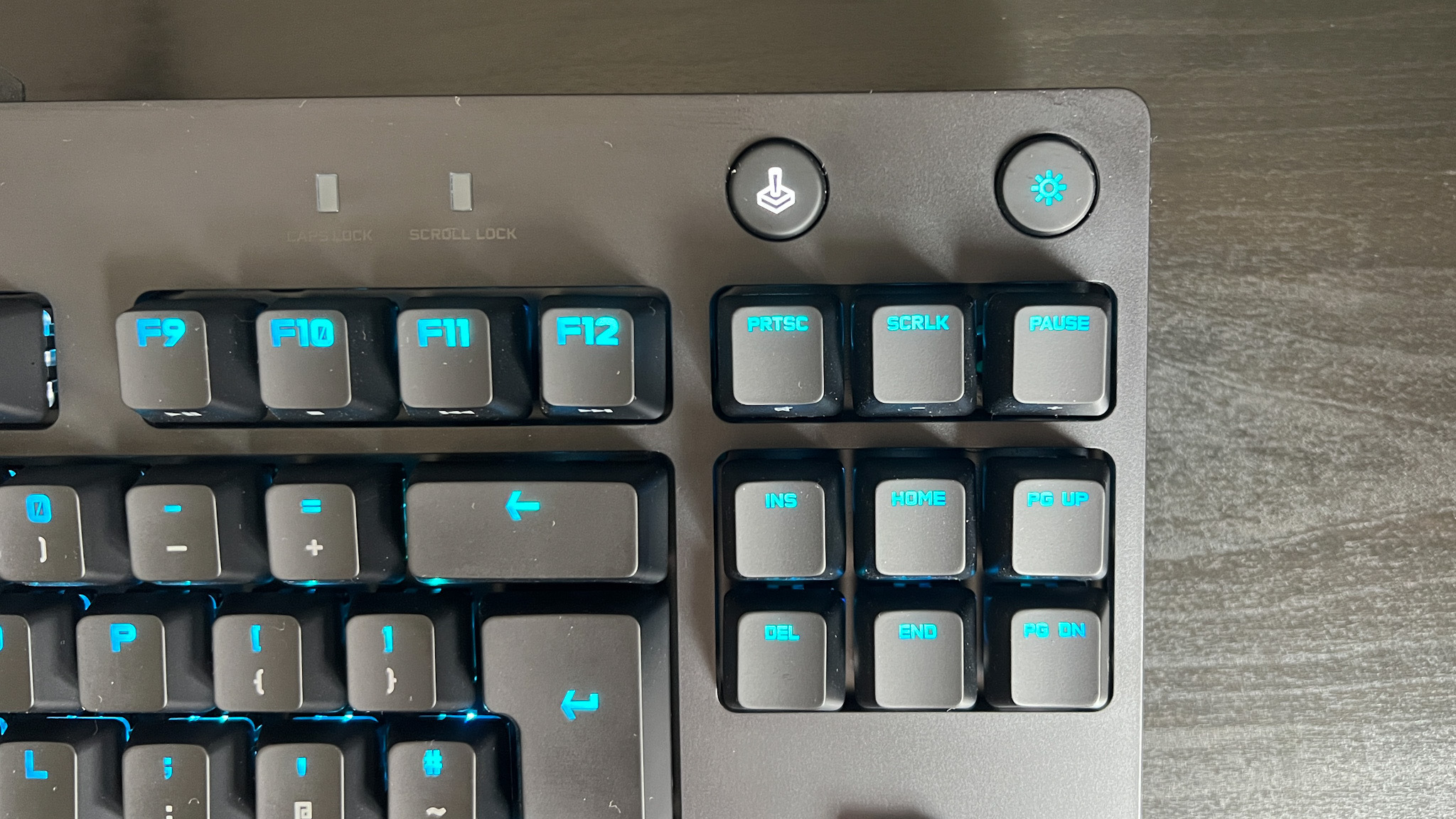
You are getting some dedicated buttons, though these are still largely tournament-focused, with a Game Mode and RGB toggle on the upper right-hand side of the deck. Media controls are placed along the function row from F9 onwards, and F1 to F12 are all fully programmable, with an additional layer of G Shift functionality as well. While that's not quite as intuitive as a full deck of possible macro commands, I did find myself learning to hit function macros pretty easily. That said, considering fully programmable decks are more commonplace these days, it's not something I'd be happy to settle for at over $120. Still, you won't need macros if you're competing.
Logitech G Pro TKL performance
While initially put off by the noise of those clicky blue switches (I tend to prefer a linear option), I quickly came to love typing on the Logitech G Pro TKL. The shorter pre-travel, even for a blue switch, and snappy debounce ensured every keystroke felt crisp, while the balanced spacing and particularly tactile switch bump ensured everything was precise as well. I averaged a 90WPM speed with 98% accuracy across typing tests - in line with my average 90 - 100WPM speeds but very much at the bottom end.
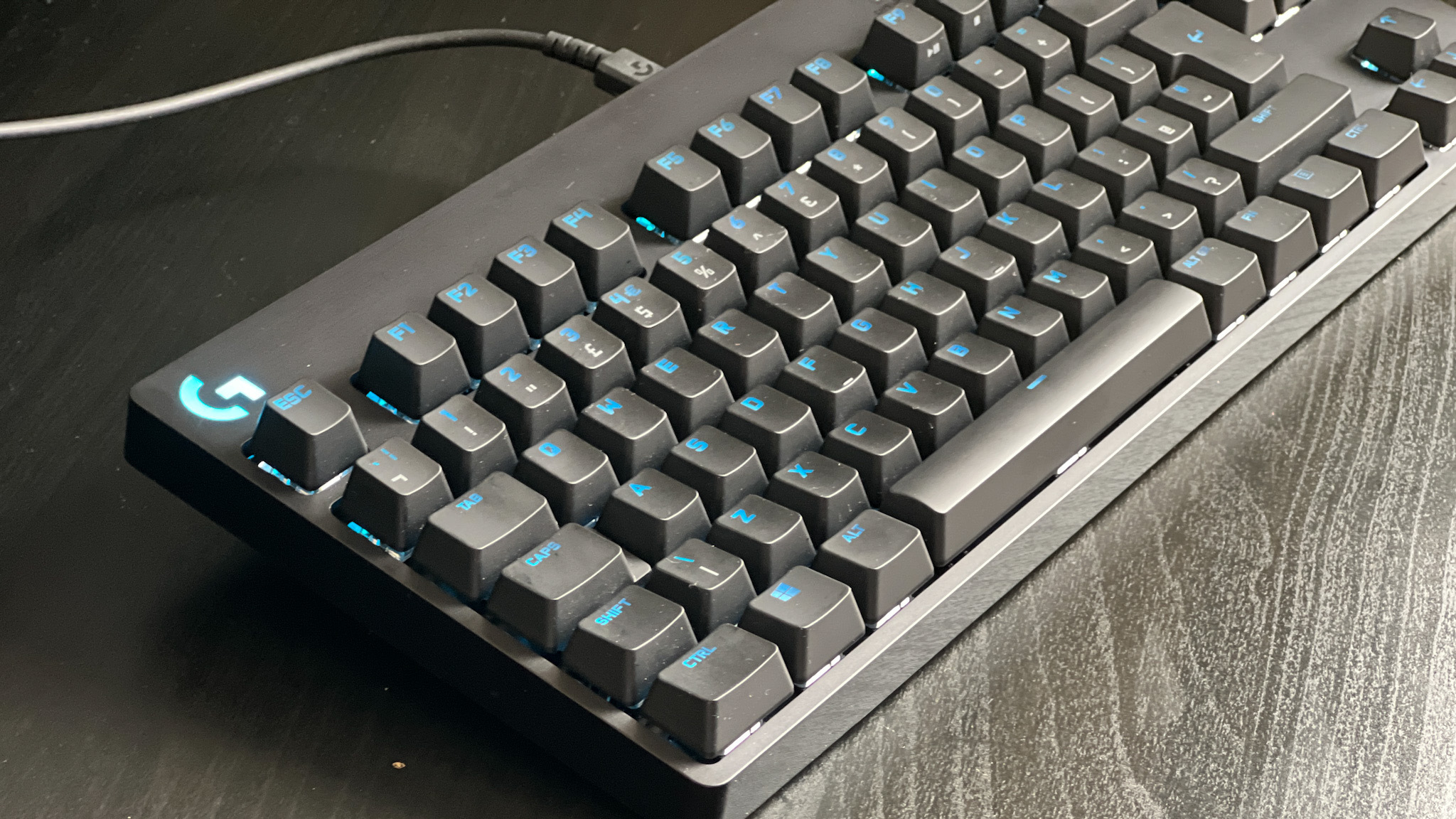
This translated well to more chaotic moments in Apex Legends, I was able to move quickly across the board with very few accidental presses - all while keeping my usual muscle-memory combos firing out with ease. Though an older product, I didn't notice any slow response times, and latency held up well to the naked eye against newer releases as well.
Using the Logitech G Hub software is always a little frustrating, but it was easy enough to hook up a few macros and set RGB configurations.
Should you buy the Logitech G Pro TKL?
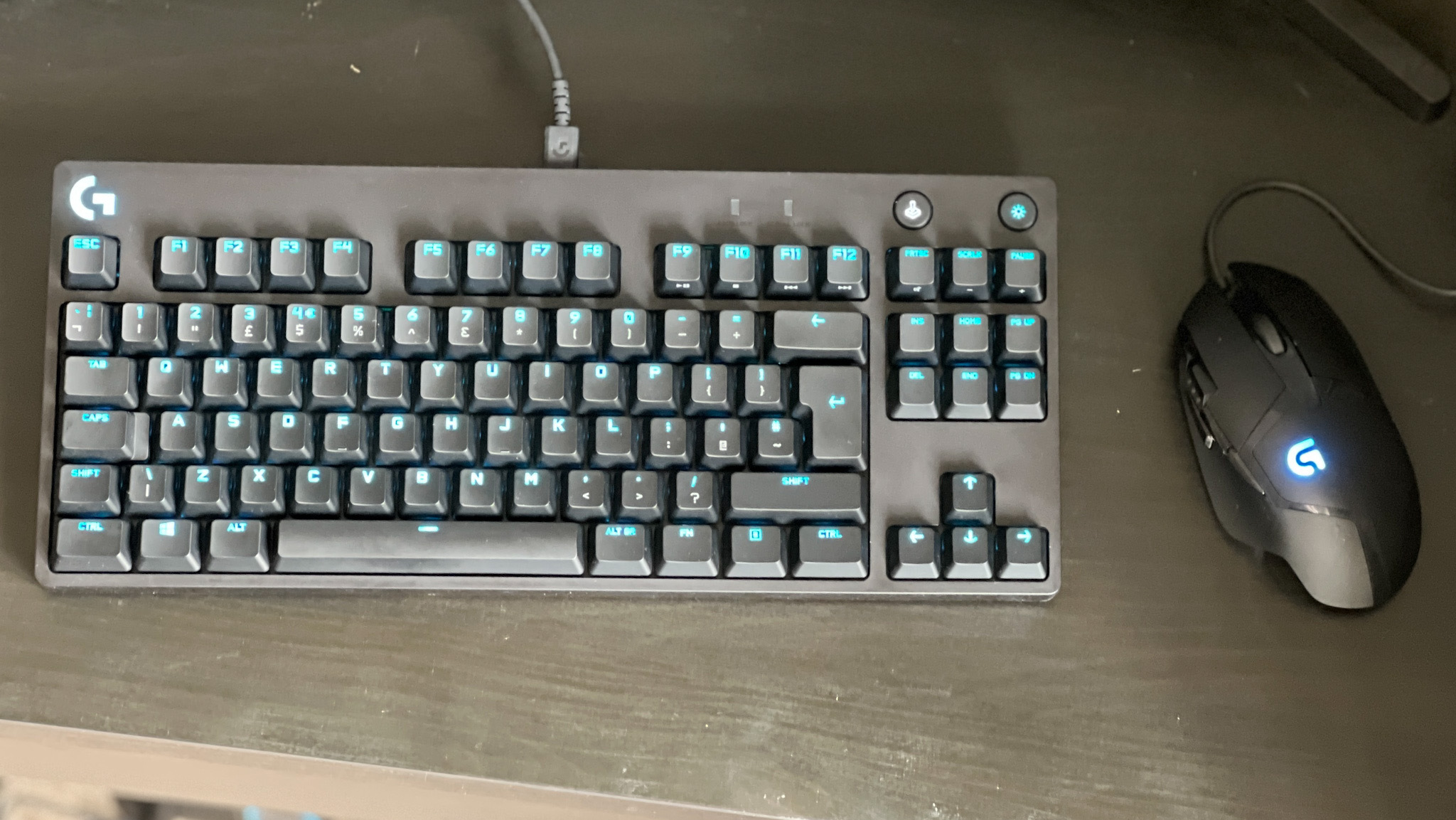
In itself, the Logitech G Pro TKL is an excellent competitive keyboard offering super low latencies and a comfortable, snappy switch experience. It's held up well over the years and is still a solid pick from today's lineup if you're looking for a stripped-back competitive-level keyboard that won't break $130 / £130. Plus, there's always the newer Logitech G Pro X keyboard which offers a wider array of switch options (and the ability to hot swap your switches as well).
With all of that said, though, this is a solid but lean experience by today's standards - you can find better overall value in newer models. The Corsair K70 RGB TKL, for example, manages to pack lower latencies, 8K hyper-polling, grippier keycaps, an aluminum frame, and a fully programmable deck for $139.99 / £149.99. The SteelSeries Apex Pro TKL goes even further, adding new adjustable linear switches, an OLED smart display, and a wrist rest for $179.99 / £189.99.
Or, if you're after something a little cheaper, it's worth checking out Logitech's own G413. This is a full-size keyboard so you are losing some of that portability / desk space-saving, but considering you're only paying $89.99 / £69.99 (and often much less during its frequent discounts) the mechanical switches, USB passthrough, and slimmer design are all worth a look.
How we tested the Logitech G Pro TKL
I used the Logitech G Pro TKL over the course of two weeks for all my daily work and play, while also using the SteelSeries Apex Pro Mini and Corsair K70 RGB TKL for comparison. I used the G Pro for regular daily runs on Apex Legends, Shadow of the Tomb Raider, Cities Skylines, and Planet Coaster and tested typing speeds with TypingTest.com. For more information on how we test gaming keyboards, be sure to check out our full GamesRadar Hardware Policy.
For more inspiration, we're also rounding up all the best Razer keyboards as well as the best wireless gaming keyboards and hot-swappable keyboards as well.

Managing Editor of Hardware at GamesRadar+, I originally landed in hardware at our sister site TechRadar before moving over to GamesRadar. In between, I've written for Tom’s Guide, Wireframe, The Indie Game Website and That Video Game Blog, covering everything from the PS5 launch to the Apple Pencil. Now, i'm focused on Nintendo Switch, gaming laptops (and the keyboards, headsets and mice that come with them), PS5, and trying to find the perfect projector.
